
माध्यमिक हिन्दी (Intermediate Hindi)
Book Specification
| Item Code: | IDD556 |
| Author: | Yamuna Kachru & Rajeshwari Pandharipande |
| Publisher: | Motilal Banarsidass Publishers Pvt. Ltd |
| Language: | hindi |
| Edition: | 1997 |
| ISBN: | 8120805593 |
| Pages: | 83 |
| Cover: | Paperback |
| Other Details | 9.6" X 7.2" |
| Weight | 350 gm |
Book Description
Intermediate Hindi is a selection of teaching materials for teaching Hindi as a second or foreign language. It consists of a number of passages - mostly published materials for general reading designed to teach the grammatical points assigned for the intermediate level. The texts provide a wide range of vocabulary (including Indo-Aryan and Perso-Arabic near synonyms), a variety of topics suited for conversations among students, and typically South Asian Social and Cultural contexts. Each text is followed by a detailed glossary, grammatical explanations for selected constructions, notes on vocabulary and fixed expressions, and exercises and home work assignments. There are also sections on word study and pronunciation. Each volume represents one semester (approximately 48 hours) of classroom instruction.
Professor Yamuna Kachru is Professor of Linguistics and English at the University of Illinois at Urbana-Champaign. Her numerous works on Hindi Linguistics include Aspects of Hindi Grammar (Manohar Publications, New Delhi 1980).
Rajeswari Pandharipande is Associate Professor of Linguistics and Religious Studies at the University of Illinois at Urbana-Champaign. She has published two books - Never is a long time (a collection of her poems in Hindi), and The Eternal Self and the Cycle of Samsara: An Introduction to Asian Mythology and Religion. She has published extensively on Syntax, Semantics, and Socio-linguistics of Hindi and Marathi.
This work would not have been possible without the incisive comments, cooperation, and input of various persons. Our gratitude is due to the teaching and research assistants and instructors who were associated with the classroom teaching and specific research projects concerning Hindi at the University of Illinois at Urbana. Those who contributed to various aspects of material development are Tej K. Bhatia, Susan Donaldson, Constance Fairbanks, Geoffrey Hackman, and K.V. Subbarao. The Unit for Foreign Language Research and the Division of Applied Linguistics, both of the University of Illinois, provided seed money for preparation of this work. The contribution of the American Institute of Indian Studies and that of Research Board of the Graduate College of the University of Illinois has been vital in the research on projects related to Hindi grammar over the last two decades. The insights gained by such research reflect in this work. Pradeep R. Mehendiratta, Director of the American Institute of Indian Studies in Delhi provided support and encouragement beyond the call of duty. The constant questions, observations, and reactions of our students stimulated us to revise and rewrite most sections of the work; we are grateful to them for their contribution.
The present volumes of Intermediate Hindi grew out of the instructional materials used at University of Illinois, Urbana-Champaign, since 1968. Each volume represents one semester (approximately forty-eight hours) of instruction. These texts, however, can also be used for instruction organized around other time periods, such as quarters. Each unit, on an average, is designed to take up a week of classroom interaction (four hours) and practice outside the classroom.
The texts have mostly been taken from published material for general reading by native speakers of Hindi. Only a few texts have been specifically prepared from the point of view of filling in certain types of lexical gaps or for providing contexts for conversation. We have incorporated selected texts from Intermediate Hindi by Usha S. Nilsson (Indian Area and Language Center, University of Wisconsin, Madison, 1967, now out of print). The primary aim in selecting the texts has been to incorporate most of the grammatical points considered important by the end of the intermediate level of instruction (see A Three Year Curriculum in Modern Standard Hindi by Michael Shapiro, et. al., Final Report for U.S. Department of Education Grant no. #G008002118); to provide a wide range of vocabulary, including near synonyms from Indo-Aryan and Perso-Arabic sources; to include varied topics around which conversational interaction with and among students is possible; and finally, to present typically South Asian social and cultural contexts. We have made no attempt to adhere to any notion of ‘strict grading’; units have been designed and sequenced to promote competence in communicating through Hindi.
Each text is followed by a detailed glossary, grammatical explanations, for selected constructions, notes on vocabulary and fixed expressions, and exercises and homework assignments. Ideally, each lesson should have been followed by detailed sections on word study, exercises for practice in the classroom, and assignments to be completed at home. These additions, however, would have increased the size of the volumes considerably, with concomitant increase in the price. We have, therefore, included only a few selected types of exercises within each unit, taking care, at the same time, to introduce all possible types within volumes.
It is our hope that teachers who use the volumes will devise their own exercises according to their needs using as models the exercises incorporated in the volumes. The same is true of word study material. In spite of the selective nature of the ancillary material in the units, we feel that the information provided in the volumes is adequate for building the levels of different skills desirable at the end of an intermediate course.
This course should be used as a companion volume with reference grammars such as Aspects of Hindi Grammar by Yamuna Kachru (Manohar Publications, New Delhi, 1980) and the Outline of Hindi Grammar by R.S. McGregor (The Oxford University Press, New Delhi, 1972). In case the teacher feels a need for using supplementary materials to provide varied reading experience, selections from A Premachand Reader by Norman Zide, et. al. (East-West Center Press, Honolulu, Hawaii, n.d.) may be used. This latter text, however, may need extensive notes on vocabulary items, idioms, grammatical constructions, and above all, sociocultural facts. Other supplementary materials which may be useful are the text books for High School Hindi classes published by the National Council for Educational Research and Training, New Delhi, and selected materials from magazines such as Sarita, Dharmyug, and Saptahik Hindustan as well as such daily newspapers as Nava Bharat Times. The following bilingual dictionaries are useful for this level of instruction :
Mahendra Chaturvedi and B.N. Tiwari: Vyavaharik Hindi-Angrezi Kos, National Publishing House, Delhi, 1970 (Hindi-English); Hardev Bahri: Brhat Angrezi-Hindi kos, (2 vols.), Gyanmandal Ltd., Varanasi, 1961, and Father C. Bulcke: Angrezi-Hindi kos, Catholic Press, Ranchi, 1968 (English-Hindi). No one-volume (Hindi-English and English-Hindi) dictionary is available at present.
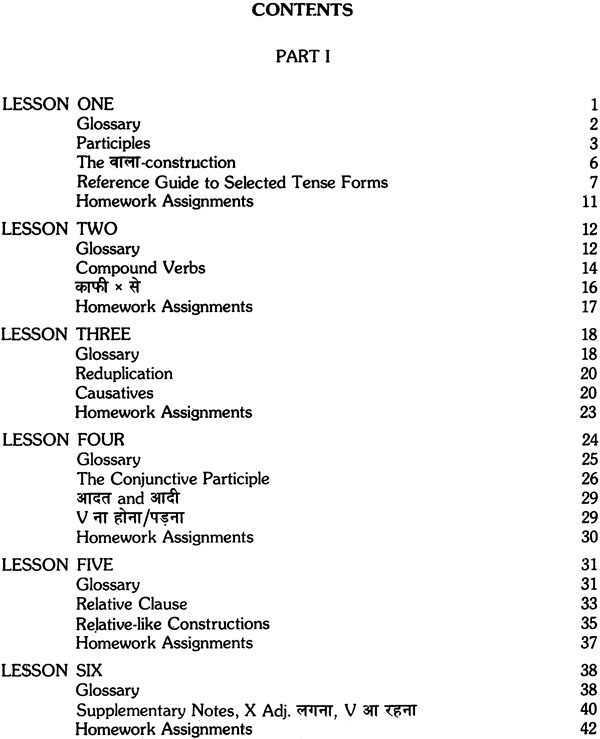
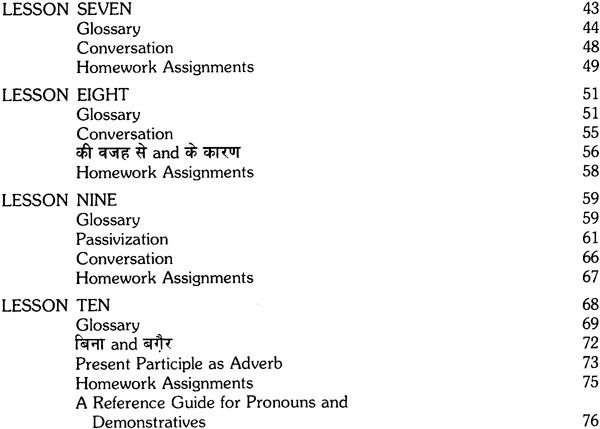
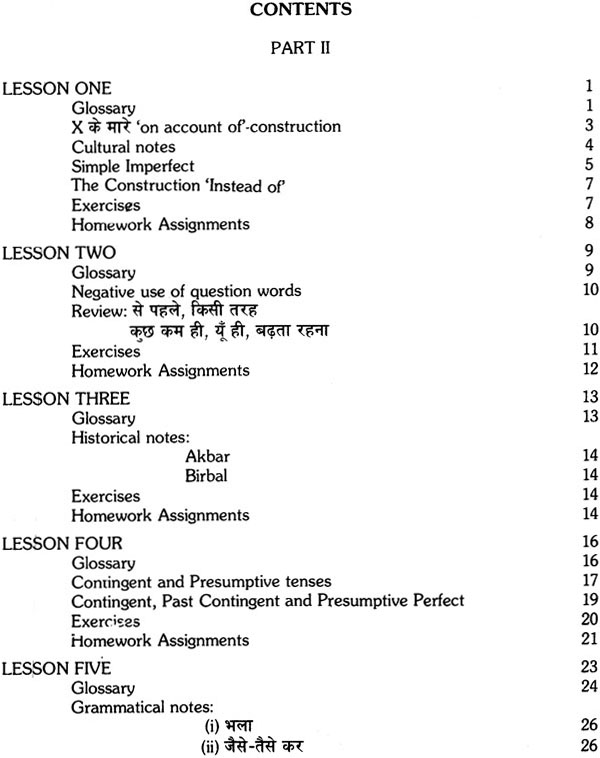
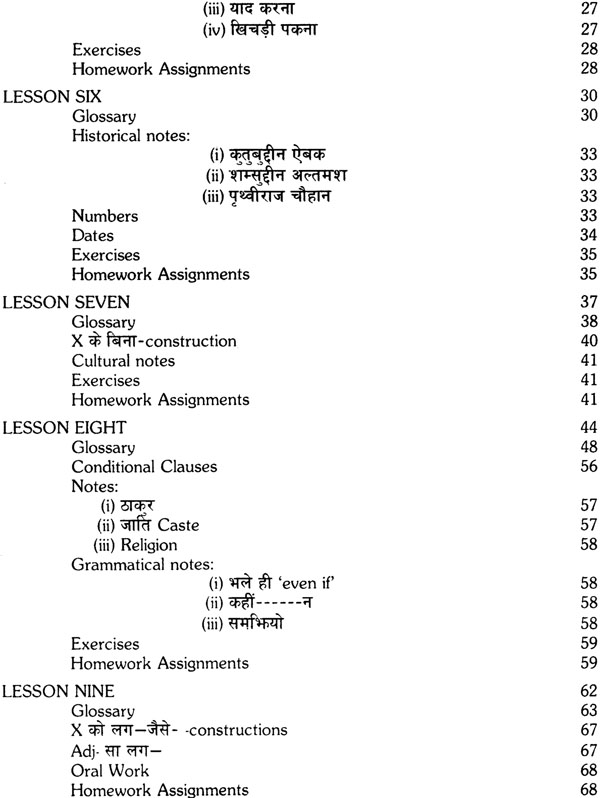
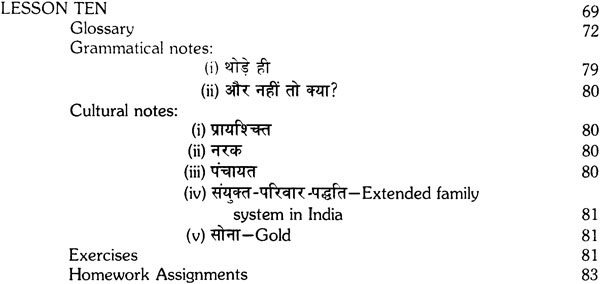
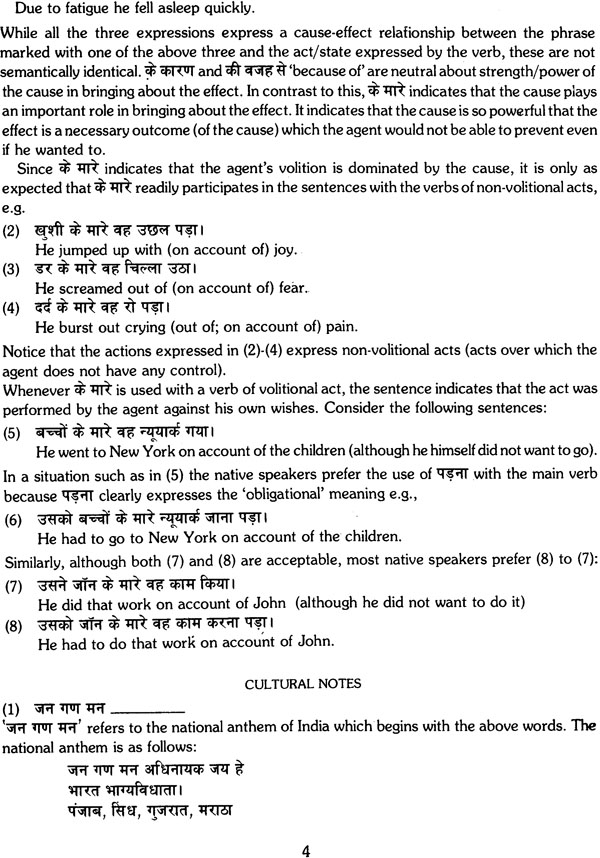
Click Here For More Books on the Hindi Language





